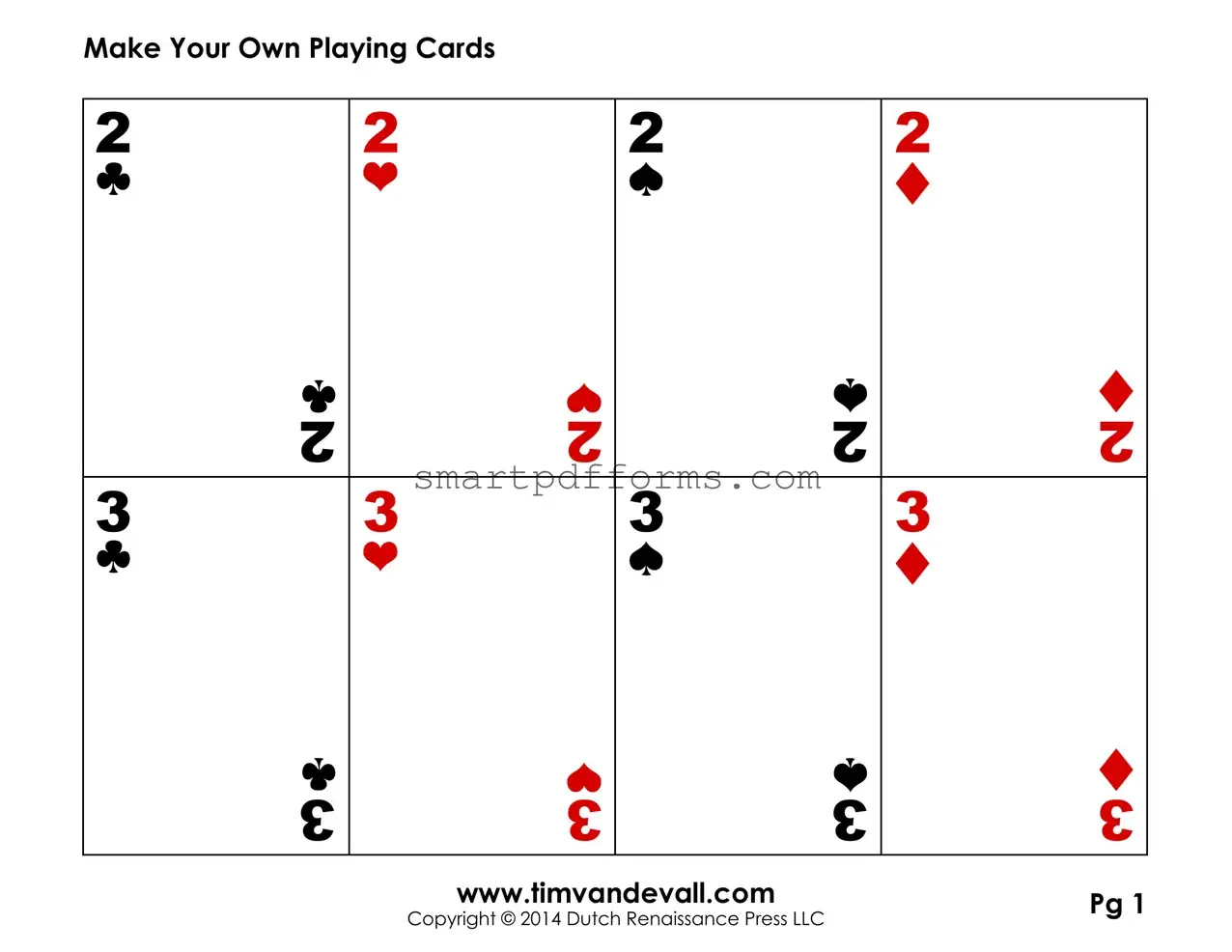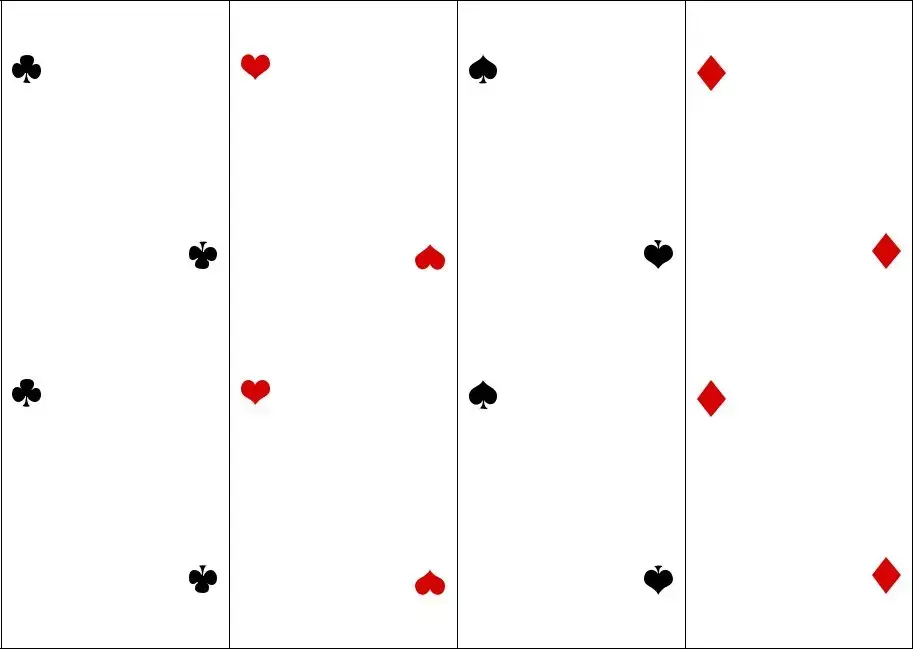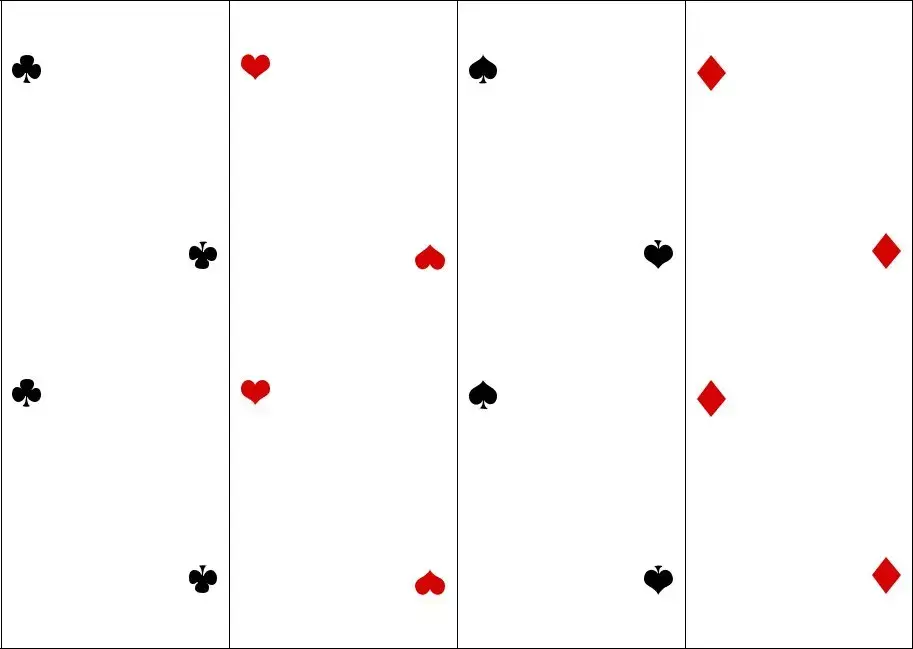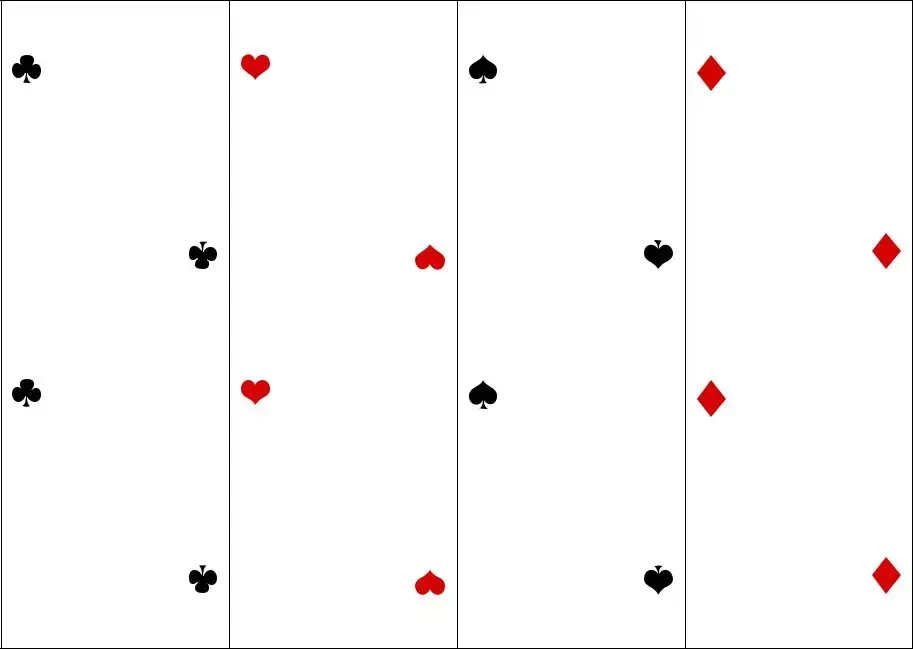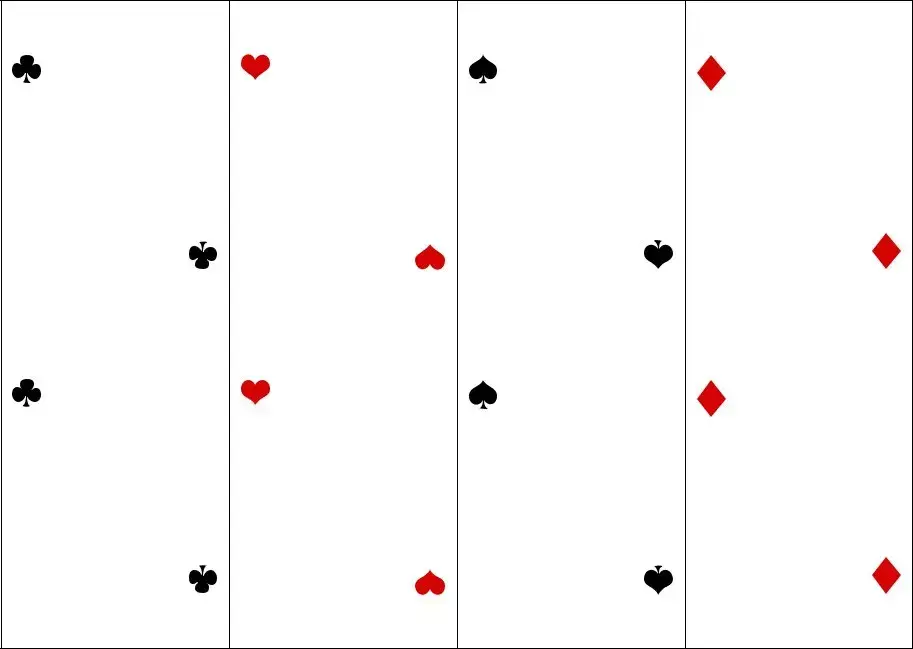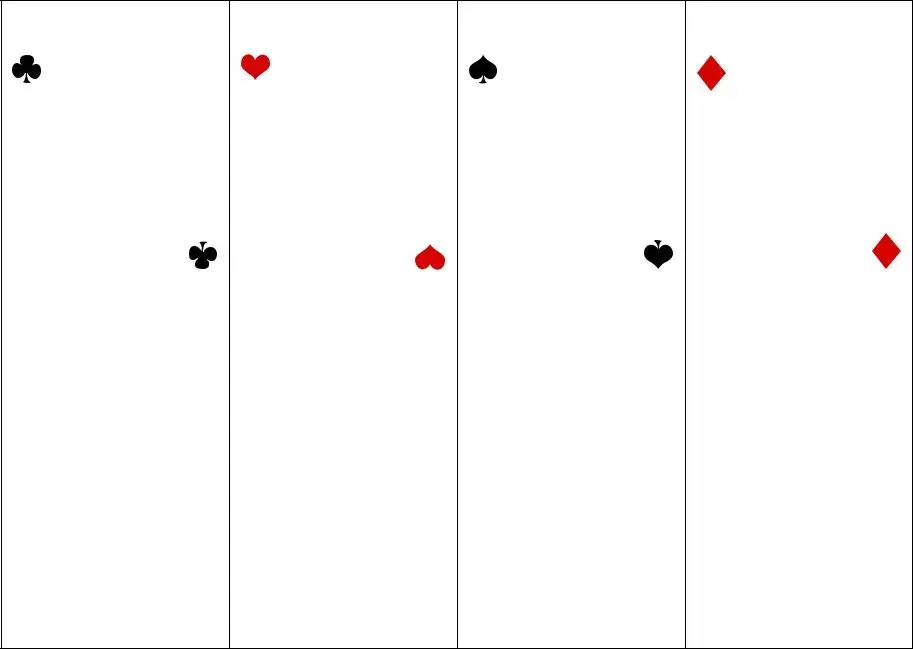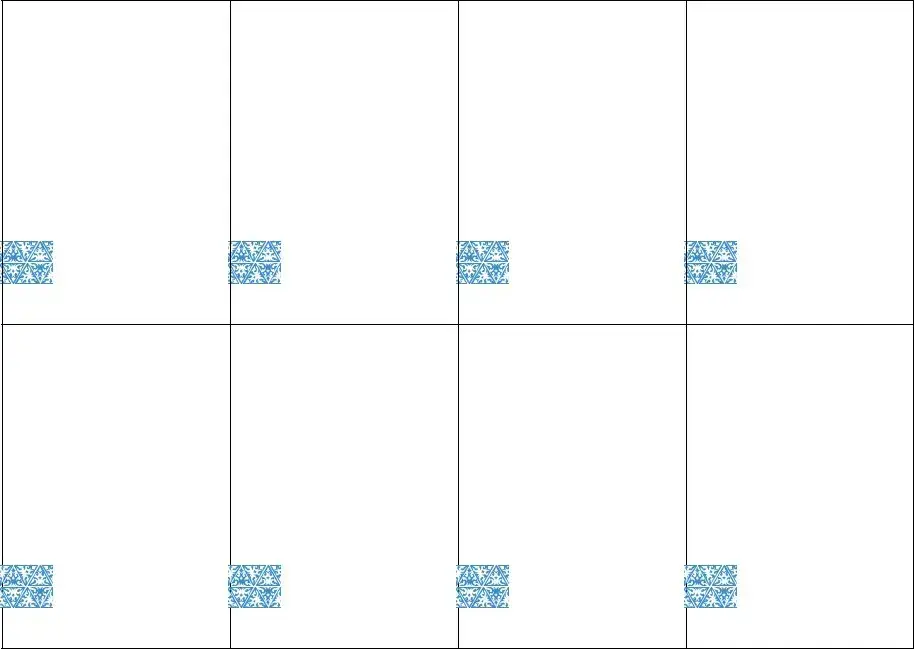Blank Custom Playing Cards PDF Template
The Custom Playing Cards form offers a unique opportunity for individuals to create personalized playing cards, a process meticulously detailed in the comprehensive guide by Dutch Renaissance Press LLC. By exploring the steps listed across various pages, users are provided with a clear, step-by-step manual on designing their own deck, ranging from numerical cards to the jacks and beyond. For those interested in adding a personal touch to their card games, click the button below to start filling out the form.
Make This Document Now
